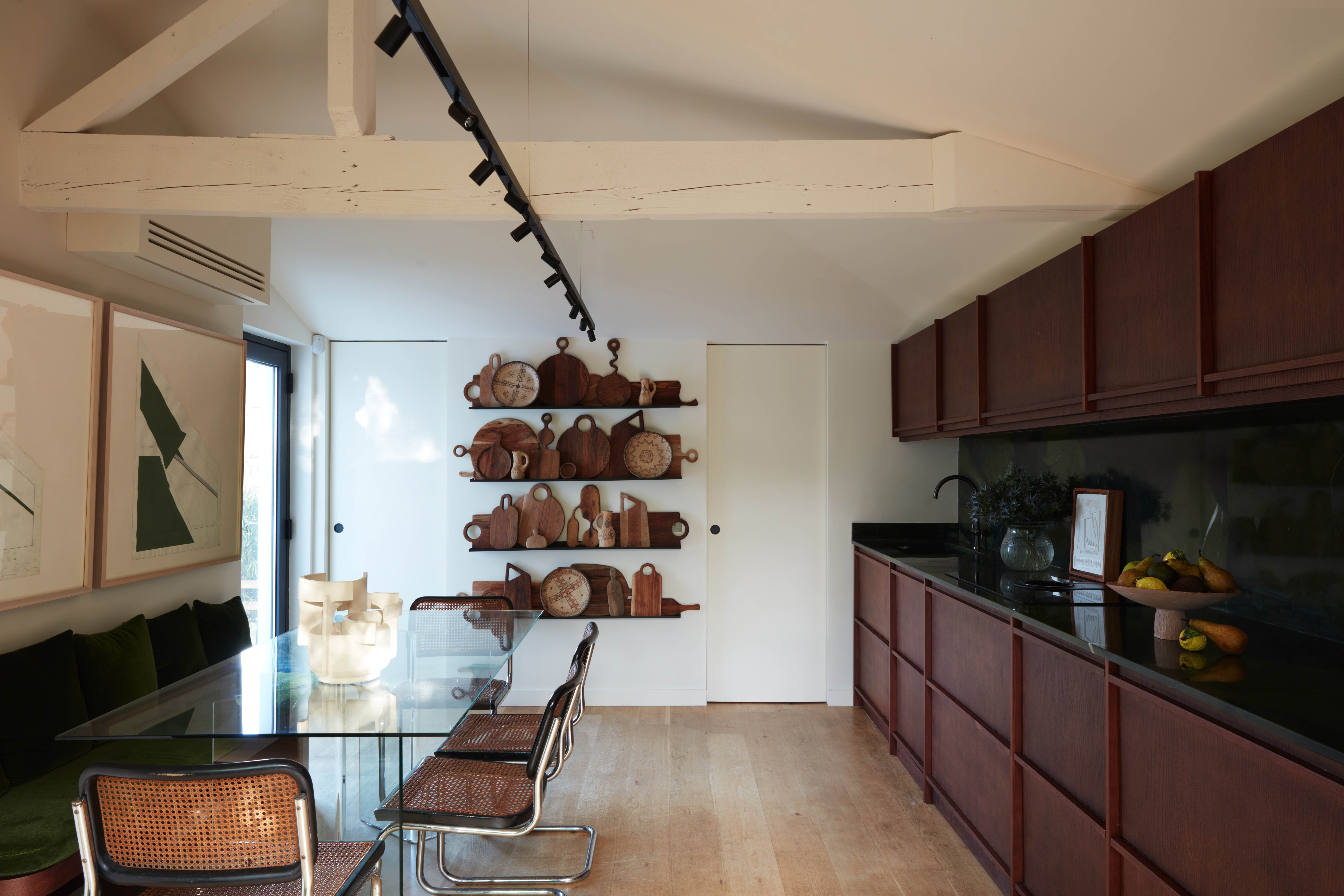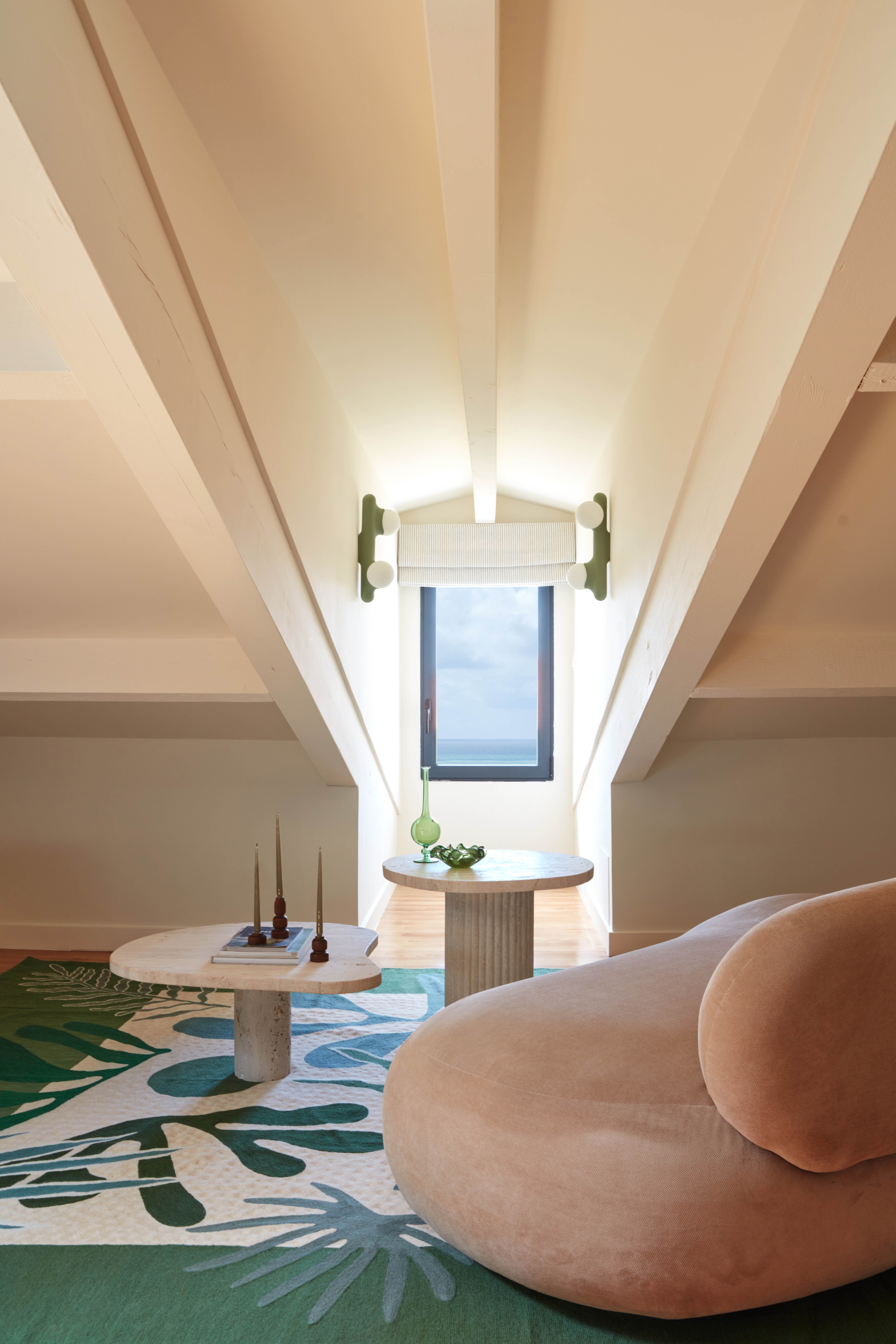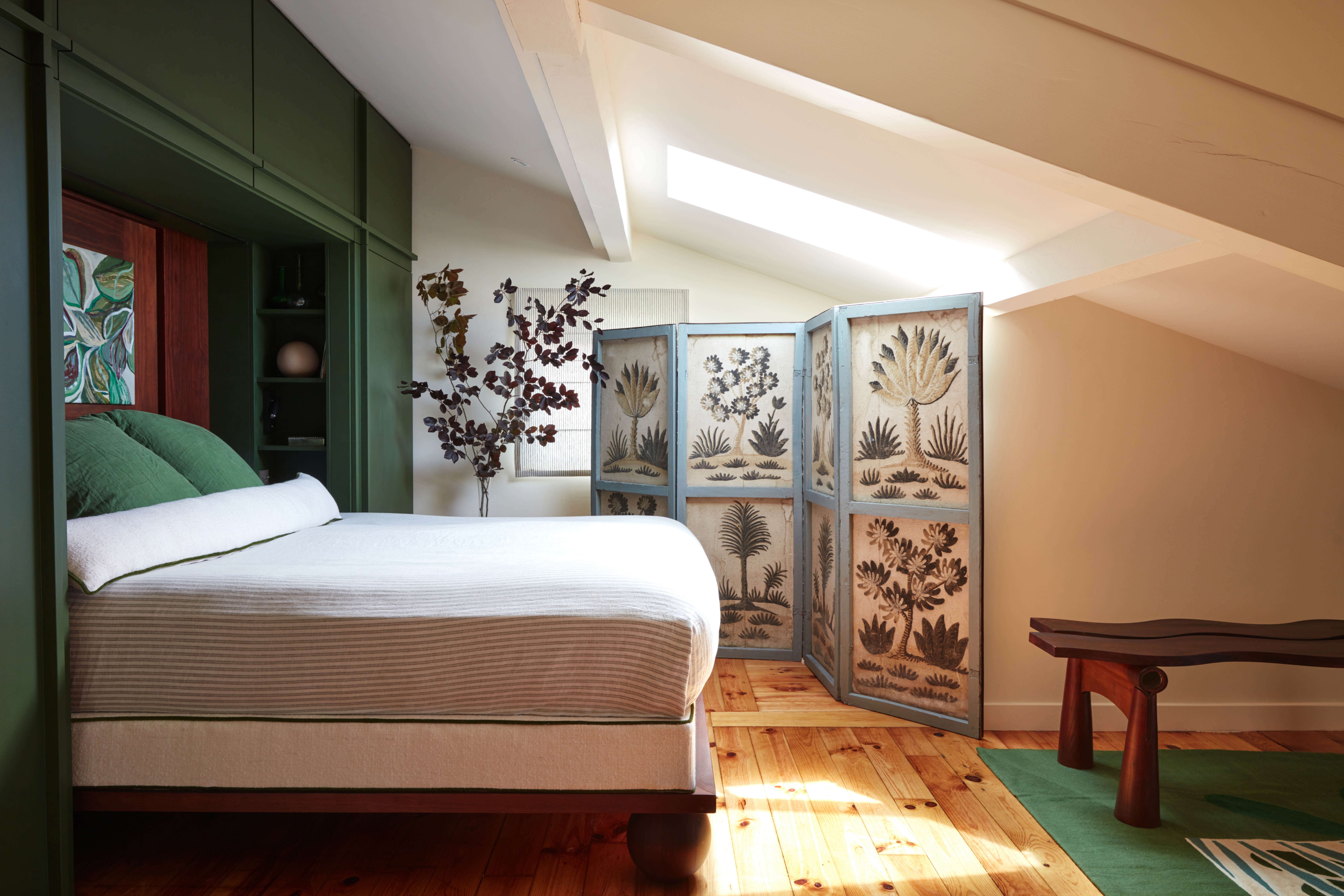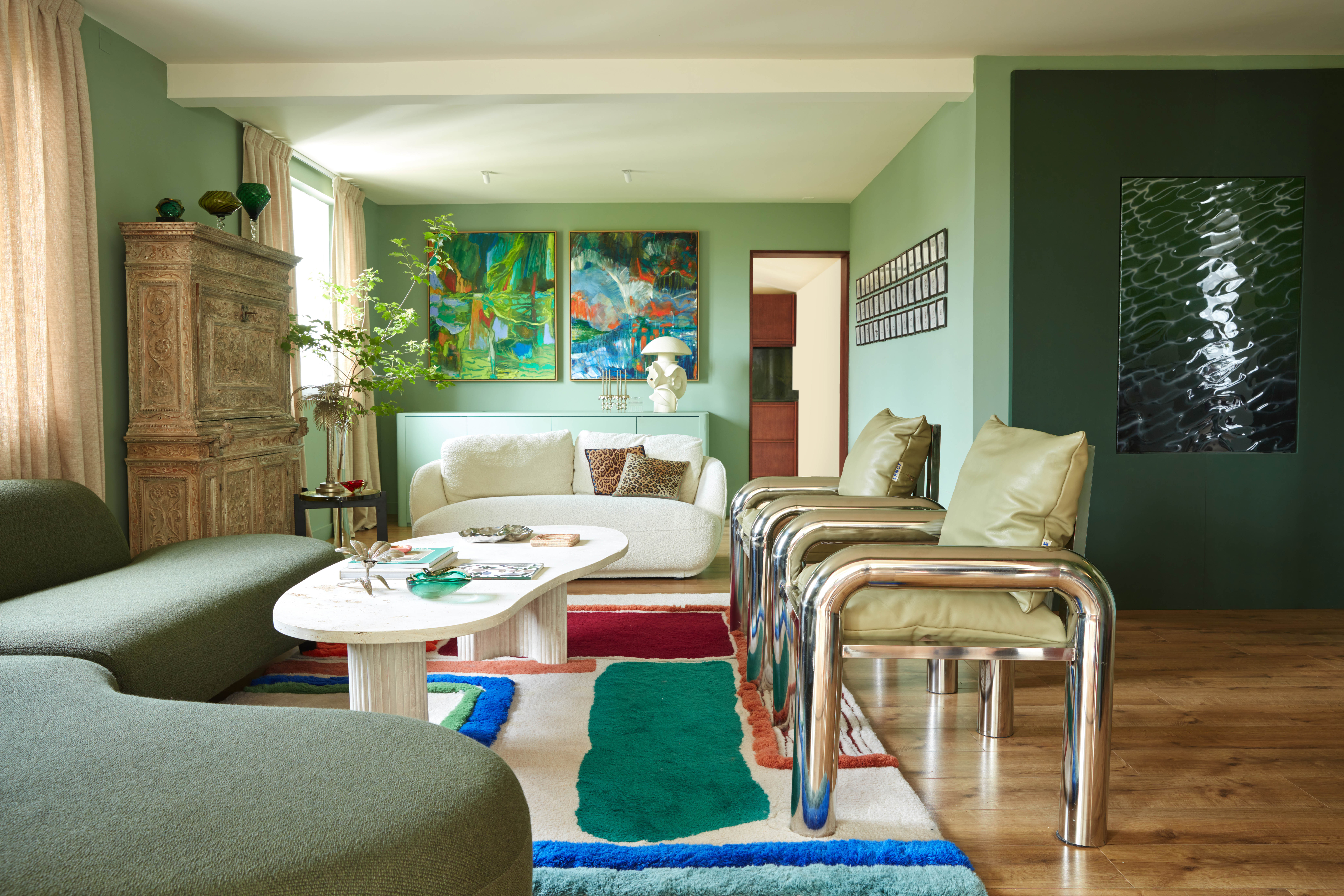Photography by Gaelle Le Boulicaut
California’s blue skies, palm trees and abundance of light are what interior architect Olivier Granet-Sottis riffed on when designing his home in Bidart, a town outside Biarritz. The Basque coast and California make natural bedfellows: not for nothing has this region been nicknamed the French California, where a surfing culture thrives and the coastline once populated by old-age pensioners has seen an influx in recent years of creatives and Paris bobos (bourgeois bohemians).
Built at the turn of the millennium, the west coast influence of Villa Mauricette (named after the owner’s cat) is evident in its large bay windows and doors that open out into a garden lush with vegetation, created in collaboration with landscape designers Christophe and Hegoa Pelle.
“It’s both the gentleness of the Mediterranean and the breath of the ocean that can be felt in my home,” explains Granet-Sottis.

Comfort and joist: Breuer chairs and a velvet upholstered bench in the kitchen
The two-storey house was purchased with his partner two years ago. “We didn’t make huge structural changes as we wanted to respect the feel of the villa.” A small swimming pool was added, and they set about creating shady reading nooks and several terraces in which to while away an afternoon watching sunlight and shadows. On the first floor, large windows were installed that look out over the ocean. “What we really wanted to do was bring a little more warmth into the building, which felt rather cold.” The changes, however, were mostly decorative: a richness of colours and tonal layering as well as the mismatching of textures that speak to the Basque tradition.
It’s the breath of the ocean that can be felt in my home
Deftly weaving together bespoke design pieces, artwork and 20th-century antiques, the villa serves not only as the couple’s living space but also as a showcase for Basque craftsmanship. Minimal this is not. Artisan objects and pieces of furniture are custom-made, including wardrobes, bathroom ceramics and rugs designed by Granet-Sottis himself, or which came from the galleries of artist friends. These include paintings by Mathieu Chavaren and Supakitch, lamps by Olivia Cognet, a chair by Patricia Urquoila, and photographs by Mamie Boude.
In the kitchen, a bowl of ceramic lemons from Venice sits on vintage glass tables flanked by Breuer chairs and a velvet upholstered bench. Wooden planks from India display carving and art by Lucas Castex, a self-taught woodworker from Les Landes who makes serving boards in sculptural, organic forms. He reflects that an emotional connection to objects made by hand is what gives him enormous pleasure.

Raising the roof: a sea view from the first floor
Bringing the outside in was paramount. Various shades of green are a leitmotif throughout the house, from the lightly reflective, avocado marble work surface in the kitchen to the palm-tree mural in Granet-Sottis’s study or the mint-painted walls and sumptuous curved sofa by AMPM in the sitting room. Upstairs, a four-panelled screen in the principal bedroom is illustrated with vintage drawings of flora and fauna, a subject that also appears on the hand-tufted rug with shapes that recall the organic swirls of Matisse.
The couple’s predilection for sculptural forms is also visible in the pink Westwing sofa and Moroccan travertine coffee table, which together serve as an antidote to the Californian “box” architecture of the building. Strict lines are further balanced by the ornate appliqué embroidery on a bed headboard and the maximalist layering of fabrics from Pierre Frey.
Another key influence is Marrakech, which Granet-Sottis credits for his enduring interest in artisan craftsmanship. “I first visited in 2013 and it was just ‘Wow!’ It was such a revelation and my love for the country has never waned.” In the past five years, he has written two guides to Morocco and a third is about to be published. Several pieces of furniture were manufactured there, including the table and bar stools on the terrace. Granet-Sottis has also collected textiles from the LRNCE studio, founded by Laurence Leenaert, a friend and Belgian artist living in Marrakech.

Sleep tight: the principal bedroom with a four-panelled screen with vintage drawings of flora and fauna
Born in Bordeaux, Granet-Sottis was encouraged by his mother in all his artistic endeavours. Biarritz was home for 18 years and childhood summers were spent in the surrounding countryside. He studied applied arts at Bordeaux university before stints in visual merchandising and graphic design. He has since built a multi-disciplinary portfolio, including interior architecture projects and, under the label, Ekka x Olivier Granet-Sottis, he is working on a line of cushions, rugs and hand-embroidered wool tablecloths from Kashmir. His unflinching eye for colour and detail is possibly best illustrated in his role as creative director of the Gaztelur estate just outside Biarritz, a restaurant and innovative retail destination with interior decoration by Marta de la Rica.
It’s a centre for “L’art du vivre,” he says, “a way of life that celebrates the beauty of everyday moments and a profound sense of wellbeing and social connection. There’s a park, a vegetable garden, we make our own honey… It’s the most wonderful place to be with friends or by yourself.” In creating havens in which to disconnect, Granet-Sottis is something of a master.
